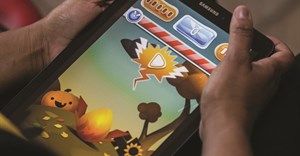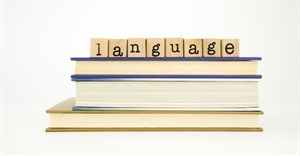In South Africa, most children are required to learn a second language (called the first additional language - FAL) at Foundation Phase level (Grades 1-3).
For the vast majority of non-English home language (HL) speakers in our multilingual society, English becomes the language of learning and teaching (LOLT) from Gr4.
The National Curriculum Statement (NCS)’s Curriculum and Assessment Policy Statement (CAPS) for Foundation Phase English FAL concedes that “this (transition) will require high levels of literacy, and especially a wide vocabulary, in English”.
How difficult this goal to achieve is illustrated by the fact that almost three-quarters of South Africa’s ‘emergent literacy’ learners cannot read for meaning in their HL by the end of Foundation Phase (PIRLS 2016). For these learners, a further challenge may be the phasing in of the Incremental Implementation of African Languages (IIAL) policy, which – apart from HL and LOLT – involves learning an additional African language at the same time.
The curriculum states unequivocally that
the main reason that children are unable to comprehend text is that their language skills are weak. They lack sufficient vocabulary and grammar to make sense of what they read.
Although there are many schools of thought around the most effective way of acquiring a new language, one of the non-negotiables is a critical mass of vocabulary.
Primary & Secondary EducationNompumelelo Mohohlwane 31 Jul 2020
Language experts, in collaboration with experienced teachers, have calculated that one needs to know approximately 3,000 of the most frequently used words in a target language in order to speak and understand it at a basic level – see for example the Oxford 3000 list. (For children who surpass the 3000-word mark ahead of their milestones, there is an Oxford 5000 list.)
Also widely available on the internet are lists of the first 100/200/300 etc. high-frequency words, which unpack vocabulary in digestible chunks for beginners. See The Children’s Printed Word Database project, as referenced in the CAPS Curriculum Statement for Foundation Phase English FAL.
Incorporating themes
The curriculum specifies that vocabulary should come from the environment familiar to the child “to ensure that children acquire and apply knowledge and skills in ways that are meaningful to their own lives,” and should be grouped in themes, which not only assist with vocabulary building, but also with deepening comprehension as a word is seen in context.
The curriculum recommends selecting four themes per term, in order to “introduce new words” and “recycle vocabulary and language structures in meaningful contexts” – for children to become actively and critically literate and not merely learn to parrot sounds by rote.
Primary & Secondary EducationMichael M. Kretzer 12 Sep 2019
It also stipulates “daily and once/twice weekly focused listening/speaking activities built around themes” should offer lots of opportunities for teaching language in context. Some of the theme or topic suggestions are (my) body, clothes, colours, numbers, food, animals, my family, growing things, the weather, simple greetings and farewells. It notes that the suggested themes/topics are simply suggestions, and that teachers should choose their own appropriate themes depending on their context and the resources available – within must-have categories such as Life Skills and Maths.
In Gr1, children should listen and then speak in their FAL, while in Gr2 and 3 they should increasingly read and write in their new language. Keeping personal dictionaries (vocabulary books) and using children’s illustrated dictionaries (both monolingual and bilingual), are recommended to support Foundation Phase learners in their journey to literacy.
What to look for in a first children’s dictionary
- One of the surest ways to build up vocabulary quickly and promote comprehension is the themed approach, as advocated by the curriculum. Therefore, when buying your ‘emergent literate’ child their first dictionary, look out for an illustrated children’s dictionary where basic vocabulary is grouped in themes set in familiar environments that are meaningful to the child.
- It should also offer lots of opportunities for asking questions, telling and listening to stories, playing language games, acting out scenarios and practising conversations, and allow for moving on to reading and writing activities as the child’s vocabulary, comprehension and grasp of grammar increase.
- If your child is learning an additional language, research has shown that a bilingual dictionary is best for promoting comprehension of the target language vocabulary. Once they are proficient in their additional language, they will be ready to move on to a monolingual dictionary.























